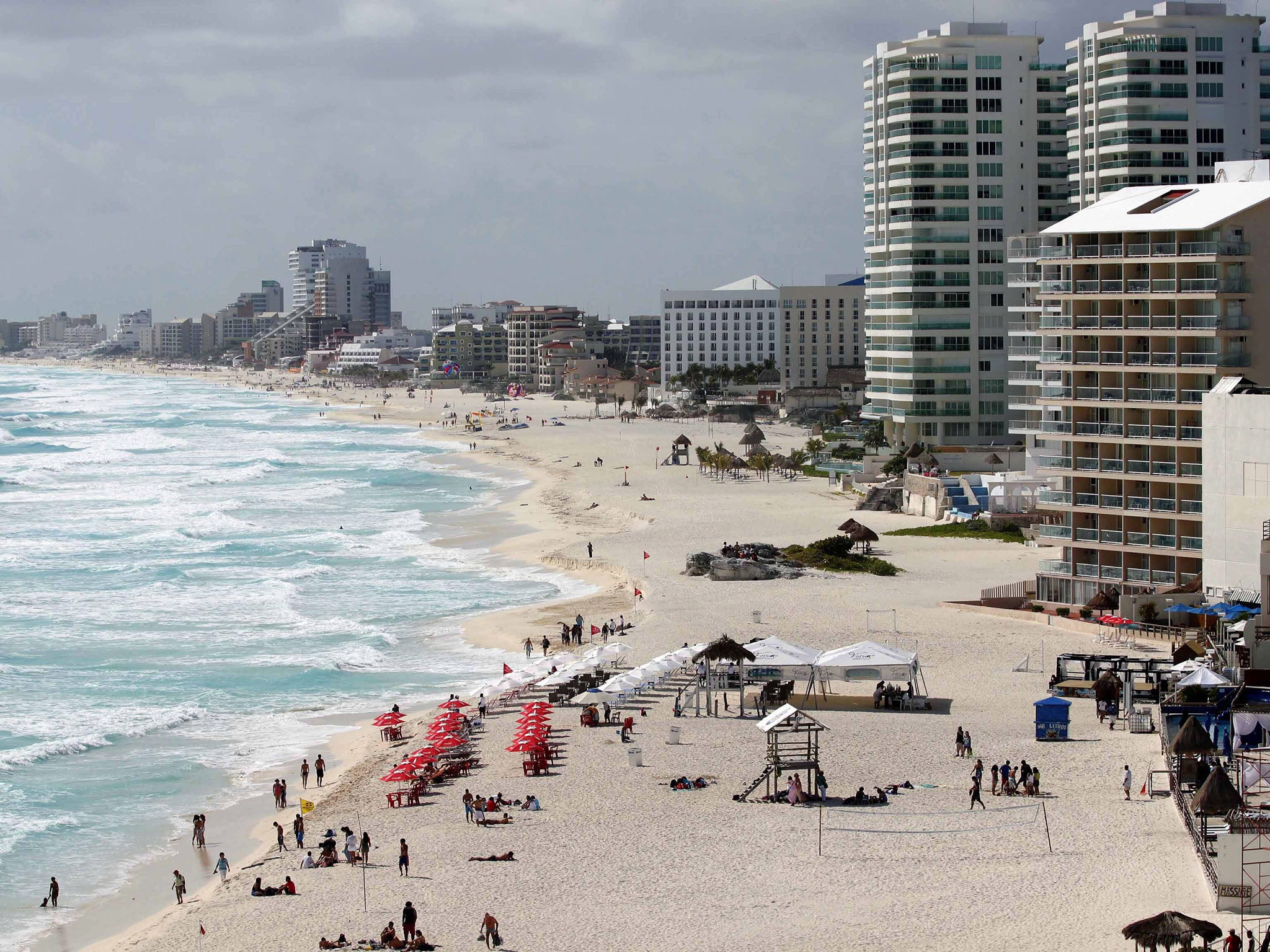The Mexican state of Quintana Roo has just moved into a new timezone
The man who pays his way

Mexico at sixes, sevens ... eights and nines
For most British travellers, Mexico means Cancun: the resort that rises high from a strip of sand off the parched, flat Yucatán Peninsula at the nation’s easternmost extreme. For most Mexicans, though, Cancun and its surroundings comprise a land apart. It is somewhere for Americans to frolic in winter and for Europeans to scorch each summer. True, Cancun is not entirely without cultural significance. Some modest Mayan relics, Las Ruinas del Rey, can be found next to the Hilton Resort golf course towards the southern end of the hotel strip. But for the average citizen of Mexico City or Guadalajara, this “Las Vegas-on-Sea” might as well be on another planet.
This month, the resort and its hinterland took a first step towards that status by moving into its own time zone.
Mexico is now all at sixes and sevens. And eights and nines. Until now, Cancun – along with most of the rest of the country – was on Zona Centro (Central Time), the same as Dallas and Chicago. The western states, Zona Pacifico, are an hour behind, and the north of Baja California has its own little time zone so that Tijuana synchronises with the US state of California. Now the Mexican state of Quintana Roo, whose main economic driving force is Cancun, has decided to fall into line with the eastern US by creating Mexico’s fourth time zone.
I was alerted to the chronological confusion by the PR guru Paul Charles, who visited Cancun last week: “The local government has just decided to change the state’s time zone, moving it forward by one hour so that it is now five hours behind GMT and not six. But no one appears to have told Apple iPhones and the airlines. My mobile wasn’t showing the correct time, and flight apps are showing the wrong departure times.”
All of which could flummox the visitor, especially if he or she has over-indulged in the Wednesday night Foam Party at Señor Frog’s, where $60 (£40) buys unlimited tequila and a T-shirt. (See you there at 10 o’clock ... or 11.)
Here comes the sun
Cancun’s abrupt introduction of a new time zone is causing consternation, with inbound travellers arriving later than they were expecting. (No homebound flights have been missed because of the change, as far as I can tell, because they have been departing an hour later than billed.) The change has been made in order to boost the tourism appeal of Cancun just in time for Spring Break, when thousands of US college students arrive for rest and relaxation.
To understand why, go back to how humanity calibrates time. When most people were hunter-gatherers or farmers, activity, by necessity, took place between sunrise and sunset. So, the Maya who built temples in and around Cancun would have employed a similar local time zone to that which applied until this month in the resort: with the sun rising around 6am, solar noon at 12 almost to the minute, and sunset around 6pm. But apart from stragglers heading home from Señor Frog’s, the average 21st-century visitor to Cancun is still sound asleep at six. And probably seven. So the daylight is squandered. Far better to adjust the time zone to fit the main economic activity, says the resort’s tourism authority: “Tourists will enjoy extra time on the beaches, consume more at restaurants and cafés, and spend longer time in parks and on excursions found in and around the destination.” The Convention and Visitors’ Bureau also claims: “The destination will gain added sunlight each day.” That’s nonsense, but there are now more people around to enjoy the sun when it does shine. A 6-7pm Happy Hour, rather than taking place entirely in the dark, now concludes with sunset.
Mexico is the first country where tourism has spurred a time-zone change. But other visitor-dependent locations should do the same, starting with the Caribbean islands. Tonight, the sun will set in Antigua, Barbados and St Lucia shortly after 6pm. Moving from GMT minus 4 to GMT minus 3 will generate an extra hour of usable daylight for the islands’ tourists. It will also reduce jet lag for British visitors.
Spanish practices
Could it be time to adjust the clocks in the leading Mediterranean holiday destination for British travellers, Spain? While the mainland and Balearic Islands share the same time as Italy, Germany and France, the nation’s body clock is adrift from the rest of western Europe. Turn up for dinner at the only restaurant in a village on the French side of the Pyrenees at 8pm, and there’s a good chance you’ll be told you’re too late. But on the south side of the mountains, you’d be too early. (In plucky Andorra, pinched between France and Spain, you can dine whenever you jolly well like.)
In fact, Spain already manipulates time. The only fragment of Spanish territory as far east as Greenwich is the beautiful isle of Menorca. Should you want to be the first person in Spain to see the sunrise, it is an easy matter of wandering down to the shore a few miles east from the island’s capital, Mahon. The first rays will sparkle out of the Mediterranean at 7.30am, corresponding to 6.30am further north in Greenwich. But on the far side of Spain, the citizens of Vigo will stumble around in the dark for almost an extra hour before the sun appears. Since the Spanish insist that the evening meal is best begun three or four hours after sunset, this time shift at least gives the rest of us some chance to synchronise.
Join our commenting forum
Join thought-provoking conversations, follow other Independent readers and see their replies
Comments